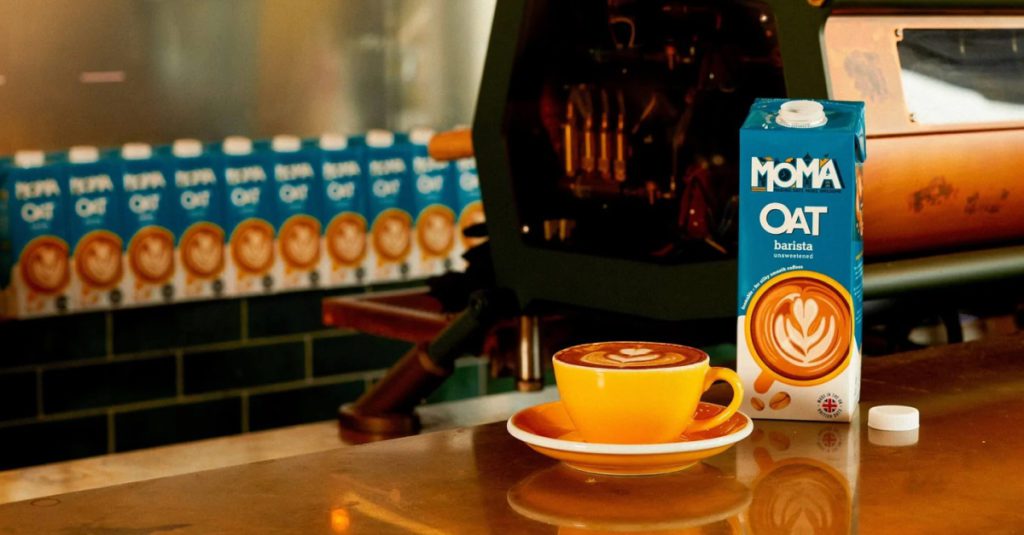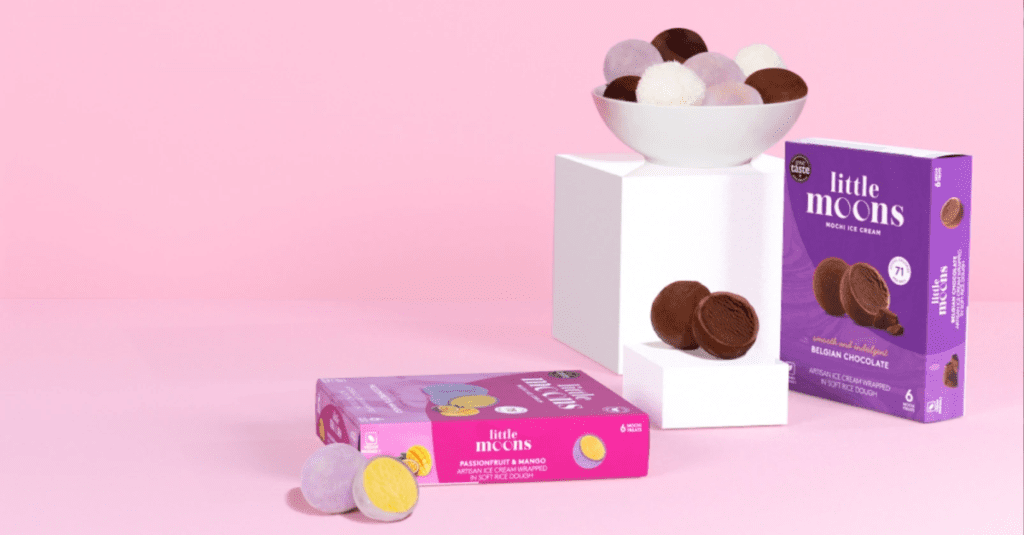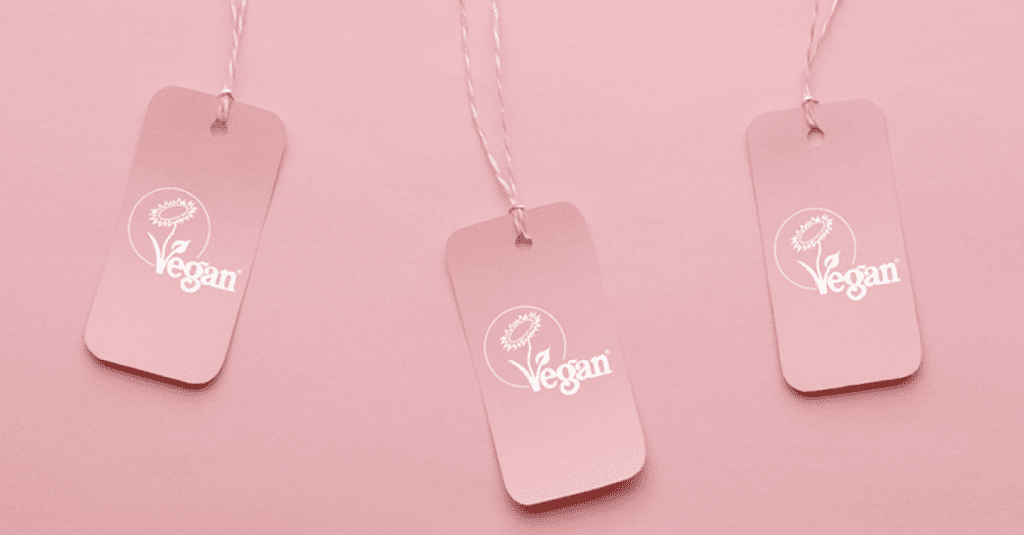The ultimate guide to food branding: real-world examples and expert tips

Few industries have as many brands and players as the world of food. From fast food outlets to supermarket aisles—food brands are heavily competing for the appetite of consumers. And as food is a sensory experience, your branding needs to be as mouth-watering as your product.
That’s why food companies are really trying to stand out with creative branding strategies. From innovative packaging designs to unique corporate identities: here’s a bite-sized guide to food branding to draw inspiration from.
What is effective food branding?
Food branding is all about creating a unique identity for a food product or brand that sets it apart from the competition and connects with its target audience. The goal of food branding is to stand out and be memorable, all while building an emotional connection with customers.
That’s done by building a clear brand identity, which includes the visual design, and packaging, but also the message and values a brand is trying to get across.
Great food branding makes your customers feel like your product is not just a meal, but an experience. Here are some ingredients that can make your food branding efforts more effective.
Authentic messaging
Similar to how you can taste the difference between real butter and margarine, your customers can sense when your messaging is fake or forced. By developing an authentic message that aligns with your brand’s values, like Tony’s Chocolonely’s mission to eradicate slavery in the chocolate industry, you can establish trust and loyalty with your customers.
Effective language
It’s not just what’s in the packaging that counts—what you say on the packaging or in your ads is the first taste people will get from your product. So stay away from bland, forgettable language.
Take Innocent Smoothies, for example—their playful tone of voice is so infectious that you can’t help but smile when you read their packaging.
Strong visual identity
Feed those hungry eyes with a rich and recognizable visual identity. With bold colors and a consistent style, your potential customers can easily spot you in the supermarket and won’t even look at all the other options out there (fingers crossed).
Torani is a great example of a brand that religiously sticks to its image with bold and colorful branding, and therefore boosts its brand awareness significantly.
Clear understanding of target audience
Knowing your target audience is like knowing the secret ingredient to a recipe. And Lucky Saint doesn’t just craft beer, it crafts a strong message that resonates with consumers.
As a non-alcoholic beer brand, they know that their audience is health-conscious and still wants to enjoy the taste of beer. So they’ve created a beer that’s all about what the consumer wants, and they’re winning over beer drinkers with it.

Unique product positioning
Positioning your product in a unique and compelling way to make your brand the main course instead of just another side dish. Beyond Meat positions itself as a meat alternative that still offers the taste and texture of real meat, attracting vegans and meat-lovers alike.
Memorable packaging
You may have read Coca-Cola’s bottle design brief from 1915: ‘A bottle so distinct that it could be recognized by touch in the dark or when lying broken on the ground.’ While the idea of that may sound intense to product designers (or anyone who’s ever received a creative brief), they did create a memorable bottle—that many people will recognize just by touch.
If you’re looking for insights into your food packaging, creative testing is the perfect way to find out what your target customer think.
Why is food branding important?
You want to build a food brand that stands out from the rest, but fits right into what consumers want. That’s why food branding is such an important discipline, because you have to consider the following:
- Differentiation: In the food industry, there are a lot (a LOT) of options available to customers. Before they get to taste your product, you’ll have to win them over with branding—you have to make a good first impression.
- Trust: When it comes to food products, people want to feel confident that they’re making a safe and healthy choice. This is where food branding plays a considerable role.
- Loyalty: We all have our go-to brands for snacks and sodas. We’re creatures of habit, and that can be good news for food brands. By creating a connection with your customers through your brand, you can foster long-term loyalty and continued success.
- Revenue: Let’s be real—you’re running a business. Maybe more than other industries, food brands rely on their branding strategies to get customers to buy them.
To thrive despite these challenges, here are some key factors to consider when cooking up your branding strategies:
- Competitors: In order to differentiate your brand, you need to understand what you’re up against. Make sure you get to know your competitors and know how your target audience perceives them.
- Target audience: Who are you trying to sell to? What do they base their decisions on? Where do they shop? There’s plenty to learn about your target market.
- Sustainability: With increasing concern about the impact of food production on the environment, sustainability is becoming a key factor in food branding. Consider if and how you will incorporate this into your branding strategy and corporate identity.
- Consumer trends: From pumpkin-spiced everything to no-alcohol wine—food follows trends. Keep up with consumer trends and incorporate them into your branding strategy.
- Health considerations: Health is a top concern for many consumers, so consider how you can position your brand as a healthy choice—or at least one that’s clear and honest about ingredients and nutritional value.
Does your food branding resonate with your target customers?
Find out how to make your food products stand out on the shelves with reliable creative testing insights from Attest.
Get your food branding insightsFundamentals of a food brand identity
The identity of your food brand is the foundation of your overall branding strategy. The visual and aesthetic representation of your brand is what helps consumers recognize and connect with your products.
Here are some fundamental elements to consider when building your brand identity:
Brand colors: Think of how many food and beverage brands have gone with the color red—that isn’t a coincidence. Your color palette is a key part of your brand identity, and colors evoke emotions and values. Choose yours wisely (i.e. test colors with target consumers).
Typography: Quirky, creative, classic or chic… the fonts and typography you pick for the materials of your brand help communicate your brand’s personality and tone. Have set fonts for headings, subheadings, and body text to create a cohesive look and feel.
Logo design: Logos still matter! It’s the crown piece of your branding, so create and tweak it with care. Make sure it’s visually appealing, easy to read and memorable. And try it out in different settings.
Packaging: Your packaging is more than just functional. Think about Coca-Cola. It reflects your brand’s personality, and communicates important information about your product. Don’t be afraid to make bold choices here, and try to be consistent.

Photography and imagery: Food photography and video ads are a great way to bring your brand and ideas to life. Depict your target audience, the settings your products fit in best and try to get the taste across with lively and unique visuals. Hint: most consumers are allergic to stock images.
How to create a food brand (with real-world examples)
To the food branding kitchen! Here’s how you cook up a spicy food brand that people will eat up.
1. Conduct market research
First, find out what you’re dealing with here: your consumers, your competitors, trends and regulations, and everything else you can learn from your market.
Example: Big Prawn Co
With concerns about the depletion of fish stocks, Big Prawn Co was determined to find an alternative that would not only secure the future of their company but also the future of the oceans.
That’s when they started their fun fish-free fingers and burgers NPD project, using consumer research with Attest to shape their new delicious products every step of the way.
They found that there was a strong demand for green, plant-based alternatives from retired people, not just the younger age groups who are often associated with plant-based eating.
Using their findings, Big Prawn Co successfully secured a spot at Waitrose, using the survey data as a key element in their initial sales pitch. They were also able to enhance live sampling sessions with consumer data, which helped to swing decisions and led to more successful launches. Read the full case study.
Launch products people will eat up!
Make sure you launch food products you know will be popular with your target customers. Get fast, reliable consumer insights with Attest!
Test your food branding2. Find your brand positioning
Based on your market research, you’ll be able to determine what position in the market you could take on successfully. Your positioning will entail everything from your pricing tactics to what channels you use and what consumers you aim for.
Example: MOMA
MOMA, pioneers of oatmeal and oat milk, were gearing up to launch a colossal ‘above the line’ advertising campaign for their much-awaited Barista edition oat milk.
The campaign concept centered around MOMA’s new brand positioning as ‘the craft oat company‘ and was designed to reach people across multiple touchpoints including connected TV, outdoor, in-store and social media.
To gauge the effectiveness of the campaign and validate their investments, MOMA executed a pre- and post-campaign brand tracking study with Attest to assess the impact of their messaging.
MOMA’s marketing team delivered a data-driven presentation of their campaign tracking results to their internal stakeholders. The teams analyzed the data alongside their media and creative agencies to uncover valuable insights, allowing them to fine-tune their marketing approach for future campaigns.

Inspired? Create your own survey with these brand survey questions.
3. Develop your brand story
No matter how big or small, make sure you develop a brand story, so consumers have something they can potentially connect with.
Example: Tony’s Chocoloney
Tony’s Chocoloney is a brand that has a strong message of sustainability, nature and ethical practices at the heart of its branding. The chocolate company is dedicated to producing high-quality chocolate while being environmentally friendly and fair to its producers.
Their corporate identity is to be one of the good guys, which becomes clear on their packaging design, website and socials, but also in their actual product: all bars are unequally divided to represent inequality in the chocolate industry.
4. Design your visual identity and brand voice
Based on your story, who you want to attract and what everyone else is doing in the market, you’ll be able to craft your visual identity. This will inform everything from packaging design to your logo to your website.
To make your visual identity even stronger, make sure you find the right brand voice. Whether it’s for a fast-food chain, a snack brand or a gourmet restaurant, the right tone and messaging can help you to differentiate from your competitors and create an emotional connection with customers.
Looking for visual inspiration? Check out these creative food packaging examples.
7. Establish your (online) presence
Make sure people can find you. Find the right channels and the appropriate message for each channel. From your website to your social media profiles, all the way to PR and working with influencers: make sure your foundation is solid and fits your target audience’s habits.
Example: Little Moons
Little Moons, a Japanese ice cream brand, went viral on TikTok, resulting in a tenfold increase in sales. However, the company faced the challenge of sustaining this growth for the long term.
Although the company’s social media following consisted mostly of late teens and early 20s women, through Attest they found that consumers driving the most volume in premium ice cream were affluent 30+ year olds with the disposable income to purchase Little Moons.
Little Moons realized that to achieve their desired business outcomes, they needed to make their brand story accessible to people who weren’t on TikTok, targeting older and wealthier shoppers.
They focused on pitching press coverage of their TikTok success, believing that if they could get it into mainstream media outlets, it would become part of the cultural conversation.

8. Develop your distribution strategy
How you package your products and where you sell them is a big part of your brand, so don’t forget to include your distribution strategy in your food branding project. It’s also important to establish relationships with suppliers and distributors who can help reach new markets and expand the brand’s reach. Market research helps you do that.
Example: Premier Foods
Premier Foods, the company behind iconic food brands such as Mr Kipling, Sharwoods, Bisto and Paxo, has maintained its position as a favorite supplier for retail partners by perfecting their distribution strategy.
Though well-known brand names play a significant role, strengthening their relationships with retailer partners requires much more.
Premier Foods conducted two surveys, one that questioned the retailers’ specific shoppers and the second that questioned total market shoppers. The respondents answered questions about their dietary profiles and shopping habits, including where they buy products, how they find out about new products, and which categories and brands are big for plant-based meals.
Their insights from Attest came back quickly, with just two weeks between launching the survey and presenting the results to their retailer.
9. Launch your ads and promote your brand
It’s time to serve your brand to the world. Based on everything you’ve done before, you should have a solid base for launching captivating campaigns. Whether it’s for an entirely new branding or for a new product—or you just want to get back into the spotlight, make sure your advertising efforts stay true to your brand’s identity.
Example: Lucky Saint
Lucky Saint, the UK’s first official beer of Dry January, had big plans to launch their most extensive advertising campaign to date. The stakes were high as the campaign aimed to raise brand awareness among new audiences, and January is a big month for alcohol-free brands. Lucky Saint didn’t want to really on hope, so instead they opted for a rigorous testing process involving four different versions of their proposed ad to ensure maximum effectiveness.
Lucky Saint’s marketing team was able to heavily weight the campaign towards the best-performing ads and fine-tune their strategy for maximum impact. Their Dry January 2023 campaign was its most successful to date, reaching over ten million people through out-of-home advertising and other activities. Lucky Saint was also the number one alcohol-free beer poured on tap in over 600 pubs, a testament to the effectiveness of the brand’s marketing strategy.
Want to launch your own survey? Draw inspiration from these food product survey questions.
8. Keep track of brand metrics
Food branding pays off, which means there are metrics you can track. From brand recognition to brand awareness campaigns, make sure to measure regularly to see how you can improve.
Example: The Vegan Society
The Vegan Society’s success story highlights the importance of brand tracking and keeping track of brand metrics. By conducting a brand awareness study through Attest, they were able to demonstrate to interested brands just how much consumers value their Vegan Trademark scheme.
This research helped them gain consumer insights on brand awareness of their trademark, and they found that their Vegan Trademark was the most trusted and recognized vegan certification logo.
The impact of the research was significant, with the Vegan Society increasing their product registrations by nearly 9,000 products since the initial survey was carried out.

Food branding tips
As the last course, here are some food branding best practices to keep in mind.
Tell a story
There’s a reason so many recipes start with lengthy tales about grandparents or travel experiences. People love a good story, especially when it comes to food. Share the history and inspiration behind your brand, as well as any unique or interesting production processes.
Focus on sustainability and honesty
Consumers are becoming increasingly eco-conscious, so consider how your brand can promote sustainability through packaging, ingredient sourcing, and production methods. Make sure this matches your corporate identity and isn’t just a marketing tactic.
Use social media influencers
Influencers can be a powerful tool in food branding, as they can help to increase brand awareness and reach new audiences. Beyond Meat went with Kim Kardashian as their Chief Taste Consultant, but you don’t have to have a million-dollar budget: micro-influencers in the food scene can be just as, if not more, effective—their audiences are often more focused on a specific niche.
Put taste first
Even though the first impression people usually get is from your packaging, you should still focus on taste.
Hosting events and tastings is a great way to introduce your brand to potential customers and build brand loyalty with existing ones. Consider partnering with local businesses or charities to create a community-focused event. Organize tastings in supermarkets or city centers.
Don’t forget about the customer experience
It’s not just about the product and branding, but the entire experience of purchasing and consuming it. Can you turn your business into a subscription service? Can you use more distribution channels? Can your packaging design fit better into fridges, shopping carts or cupholders? Can you offer additional services, such as recipes or cooking classes? Build a brand that goes beyond a product!
Build a food brand customers love
If you want to find out if your food branding resonates with your customers, or how you could do better, use our creative testing template. Measure over time to build a resilient brand that customers will grow loyal to.

Discover your winning branding
By testing your creative with target customers, you’ll find out which food branding will sell before you launch—saving you costly failures. Get fast, reliable consumer insights with Attest.
Get your copy now!FAQ
Food branding is the process of creating a unique identity for your food product, building a brand story that resonates with consumers, and crafting an experience that inspires loyalty. From the logo design to the packaging and marketing campaigns, food branding encompasses all aspects of how your product is perceived by consumers.
First, identify your target market and what sets your product apart. Then, create a compelling brand story that connects with consumers emotionally. Develop a unique visual identity that stands out on the shelves, and create a memorable brand voice that resonates with your audience. Remember to stay true to your values and consistently deliver on your brand promise.
In a crowded market, strong branding helps your product stand out and establishes trust with consumers. A well-crafted brand story and visual identity can make your product more memorable and inspire loyalty. Branding also allows you to differentiate your product from competitors, highlight its unique qualities, and convey a sense of quality and consistency. Ultimately, effective branding can lead to increased sales, customer loyalty, and a more successful business.
Tell us what you think of this article by leaving a comment on LinkedIn.
Or share it on:
